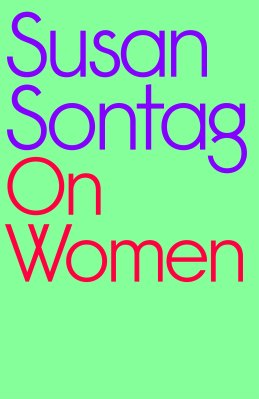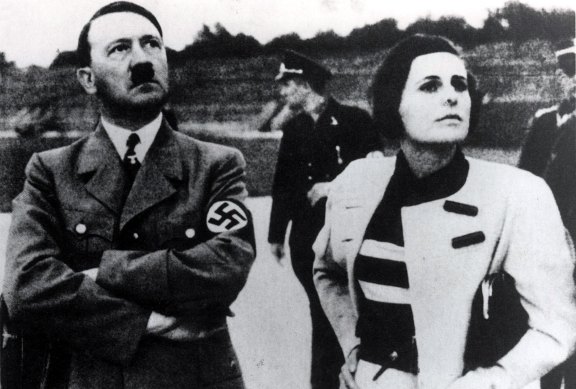Save articles for later
Add articles to your saved list and come back to them any time.
ESSAYS
On Women
Susan Sontag; ed., David Rieff
Hamish Hamilton, $35
The literary critic du jour, Merve Emre, ex Harvard and Yale and now professor of creative writing and criticism at Wesleyan University, makes some big claims in her introduction to this new collection of Susan Sontag essays.
She writes that although the pieces are almost 50 years old, she was relieved to find that rather than being relics from the past and consequently “of their time”, they were instead works graced by the “untimeliness” of genius.
Susan Sontag, pictured at her home in 2000, four years before her death, believed there were other politics besides sexual politics.Credit: Chester Higgins/ NYT
Emre claims that what Sontag was doing in these essays, originally published in magazines and literary journals between 1972 and 1975, was nothing less than articulating “the politics and aesthetics of being a woman in the United States, the Americas, and the world”.
But just how much Sontag could articulate on behalf of the women of, say, Jakarta, Indonesia, or even Geelong, Victoria, is a moot point, since even women from the privileged liberal intellectual ranks of America sometimes had trouble believing she was on their side.
Moreover, particularly in the first essays specifically addressing “the women question”, Sontag sometimes seems to miss the point. She writes that for the first time in history, almost all children born will live to adulthood, when arguably the seismic historical moment was women gaining control of their own fertility because of the contraceptive pill.
Credit:
Rather than offering anything fresh, or even original, Sontag’s take on issues such as housework, workplace equality, ageing and the beauty industry are surprisingly bland or uninteresting. Germaine Greer’s The Female Eunuch had already taken the Western world by storm – an unashamedly emotionally charged polemic of brilliance and beauty that has withstood the test of time – and yet Sontag gives the work of Greer and other leading feminists the briefest of glances.
She writes as if she herself is the starting point, as if Greer, Kate Millett, Juliet Mitchell and Susan Brownmiller hadn’t already turned the turf, as if de Beauvoir’s ground-breaking The Second Sex had not been written more than 20 years beforehand.
Much of the material in the essays on ageing and beauty have since been more rigorously examined, too, in works such as Naomi Woolf’s The Beauty Myth, so that at some point this reader began to wonder exactly why this collection had been gathered and republished. There are new contemporary voices to be heard on the subject of women (especially on the challenge to the idea of what a woman actually is) and surely there are more worthwhile “old” revered feminist voices to introduce to a younger generation of readers.
But, of course, Susan Sontag is Susan Sontag. To paraphrase William Goldman in Adventures in the Screen Trade, Hollywood keeps making sequels because if a movie fills the house the first time, why change the recipe? The essays are edited by Sontag’s son, David Rieff, which might suggest that his mother’s belief in the cannibalising nature of capitalism was not misplaced. There’s always a buck to be made.
Hitler and his favourite film director Leni Riefenstahl. Susan Sontag argued that fascist aesthetics relied on beauty as an idealised fantasy of perfection, physical and moral.Credit:
Sontag’s writing comes alive when she is writing about the aesthetics and politics of the image. Here her language flows, as if charged by both intellect and heart, where subject meets temperament as it were. It’s what Sontag is really interested in, and she begins to write like herself.
A penetrating 1974 essay on the “de-Nazification” and rehabilitation of the reputation of the Third Reich filmmaker Leni Riefenstahl dovetails nicely with an earlier essay on beauty, allowing Sontag to demolish the idea that beauty is a neutral moral concept.
She writes that the restoration of Riefenstahl’s reputation happened mostly because Riefenstahl was living in America in the early 1970s when the women’s movement was searching for feminist cultural monuments. Riefenstahl’s female defenders were happy to dispense with her questionable politics, arguing that her central engagement was never with politics anyway, but with beauty.
Sontag discredits cherished notions of beauty, suggesting that fascist aesthetics rely on beauty as an idealised fantasy of perfection, physical and moral, so that even Goebbels could imagine himself as an artist, giving shape and form to beauty through politics, “the highest and most comprehensive art there is”.
She’s at her best in intellectual discourses around these ideas. The feminist poet Adrienne Rich wrote to The New York Review of Books (publisher of the Riefenstahl essay) taking issue with Sontag, and Sontag came back swinging.
Rich argued it was not feminists who had promoted Riefenstahl, and that instead many had picketed Riefenstahl’s film events. She accused Sontag of not addressing the elephant in the room regarding Nazism, in that the Nazis represented “patriarchy in its purest, most elemental form”.
Sontag’s response was withering: “Like all capital moral truths, feminism is a bit simple-minded”. Not everything in history can be seen through the prism of the patriarchy, she retorted, since “virtually everything deplorable in human history furnishes material for a restatement of the feminist plaint”.
In this, Sontag reveals what side she’s on: that of the intellect, of the mind willing to put in the time and effort towards discovery because “truth has need of all kinds of exertion”. She believed there were other politics besides sexual politics and was unable to put her shoulder to the feminist wheel in ways some feminists wanted. This highly intelligent but flawed collection shows exactly why.
Susan Johnson’s most recent book, Aphrodite’s Breath, is published by Allen & Unwin at $34.99.
The Booklist is a weekly newsletter for book lovers from books editor Jason Steger. Get it delivered every Friday.
Most Viewed in Culture
From our partners
Source: Read Full Article










